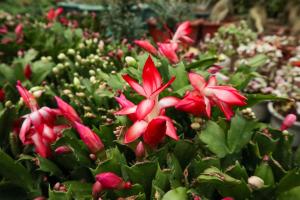How to Care for a Newly Planted Redbud Tree
Planting a redbud tree can be a beautiful addition to any garden. However, the key to ensuring the longevity and health of the tree is appropriate care after planting. Below are some essential guidelines to care for a newly planted redbud tree.
Choose the Right Location
One of the most important things to consider when planting a redbud tree is the location. Redbud trees thrive when they are planted in a location that is well-drained, with good air circulation and plenty of sunlight. It is also essential to ensure that the location is free from frost pockets or other factors that may damage the tree.
Water the Tree Properly
Watering is essential for the growth and health of any tree, and redbud trees are no exception. During the first few weeks after planting, water the tree deeply and regularly to help the root system establish itself firmly. As the tree matures, it will require less frequent watering, but ensure that the soil is consistently moist and not waterlogged as redbuds prefer well-draining soil.
Mulch the Soil
Mulching is a great way to help maintain moisture around the tree and suppress weed growth. Add a layer of mulch around the base of the tree, leaving a few inches of space around the trunk to prevent rot. Pine straw or wood chips make an excellent choice, and it is best to add the mulch around mid-spring when the soil has warmed up a bit.
Fertilize the Tree
Redbud trees grow well in good soil conditions, and adding fertilizer can help boost growth and keep the tree healthy. However, it is essential to make sure not to over-fertilize the tree, as it can cause more harm than good. Usually, redbud trees require fertilization once a year, in the early spring, with a balanced fertilizer. Fertilize just before the tree starts leafing out.
Prune the Tree
Pruning is crucial for pruning back dead, diseased, or damaged branches from the tree. It's essential to not prune in the first year of planting and wait till the second year to prune when the tree is dormant. In the second year of growth, prune back any branches that are in the way, crossing over others, or causing symmetry problems. Regular pruning will help to promote healthy growth and avoid insect infestations.
Pest and Disease Control
Redbud trees are highly resilient trees that require minimal maintenance. However, they are susceptible to certain insect pests, such as spider mites, cankerworms, and aphids. Regularly inspect the tree for pests and apply insecticides if necessary. Furthermore, the tree may be attacked by foliar diseases such as verticillium wilt, anthracnose, or Cercospora leaf spot. Avoid overhead watering, remove infected leaves or branches, and prevent water from accumulating on the tree while watering the tree.
Conclusion
Caring for a newly planted redbud tree is essential to the health and longevity of the tree. By planting it in the right location, mulching the soil to conserve moisture and suppress weed growth, fertilizing, pruning and regular pest inspection, making sure to follow the steps mentioned above, your redbud tree will thrive and enhance your garden for years to come.

 how many times do yo...
how many times do yo... how many planted tre...
how many planted tre... how many pine trees ...
how many pine trees ... how many pecan trees...
how many pecan trees... how many plants comp...
how many plants comp... how many plants can ...
how many plants can ... how many plants and ...
how many plants and ... how many pepper plan...
how many pepper plan...






























